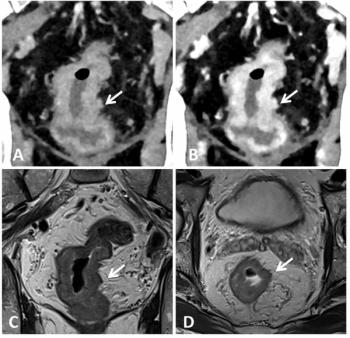
MRI Reveals Relationship of Gray Matter Damage and MS
MRI technique helps demonstrate the amount of damage in the gray matter of the brain is related to the severity of MS disability.
Macromolecular proton fraction (MPF) with MRI demonstrates the amount of gray matter damage in brains of patients with multiple sclerosis (MS) is closely related to the severity of the disease, according to a study published in the journal Radiology.
Researchers from the University of Washington, the Swedish Neuroscience Institute in Seattle and the University of Wisconsin in Madison undertook a small prospective cross-sectional study to evaluate the clinical utility of fast whole-brain MPF mapping in MS and to compare MPF with established quantitative MRI measures of tissue damage.
“The method utilizes a standard MRI scanner and doesn’t require any special hardware-only some software modifications,” researcher Vasily L. Yarnykh, PhD, associate professor in the department of radiology at University of Washington, said in a release. “MPF mapping allows quantitative assessment of microscopic demyelination in brain tissues that look normal on clinical images, and is the only existing method able to evaluate the myelin content in gray matter.”[[{"type":"media","view_mode":"media_crop","fid":"27648","attributes":{"alt":"","class":"media-image media-image-right","id":"media_crop_5022406293550","media_crop_h":"0","media_crop_image_style":"-1","media_crop_instance":"2718","media_crop_rotate":"0","media_crop_scale_h":"0","media_crop_scale_w":"0","media_crop_w":"0","media_crop_x":"0","media_crop_y":"0","style":"height: 245px; width: 250px; border-width: 0px; border-style: solid; margin: 1px; float: right;","title":"Overview of image processing in the fast MPF mapping method. Image courtesy of Radiology. © RSNA, 2014.","typeof":"foaf:Image"}}]]
The study group comprised 18 patients with relapsing remitting MS (RRMS), 12 patients with secondary progressive MS (SPMS) and 14 healthy controls. All subjects underwent 3-T MR imaging and 3D MPF maps were reconstructed from MT weighted images and R1 maps by the single-point method. The imaging technique results were compared with clinical tests characterizing neurological dysfunction in MS patients.
The results showed that “Macromolecular proton fraction (MPF) is significantly (P <.05) reduced in normal-appearing brain tissues of relapsing-remitting multiple sclerosis (MS) patients compared with healthy controls, with a relative decrease of 6.5 percent in white matter (WM) and 5.4 percent in gray matter (GM),” the authors wrote.
“MPF is significantly reduced in both normal-appearing brain tissues (P < .005) and lesions (P <.05) of secondary progressive MS patients compared with relapsing-remitting MS patients, with the largest relative decrease in GM (13.4 percent), followed by lesions (11.7 percent) and WM (6.4 percent),” they added.
The MPF in brain tissues of patients with MS significantly correlated with clinical disability and the strongest associations were found for gray matter.
The authors concluded that MPF mapping enables quantitative assessment of demyelination in normal-appearing brain tissues and shows primary clinical relevance of GM damage in MS. In addition, MPF outperforms MT ratio and R1 in detection of MS-related tissue changes.
Newsletter
Stay at the forefront of radiology with the Diagnostic Imaging newsletter, delivering the latest news, clinical insights, and imaging advancements for today’s radiologists.



























